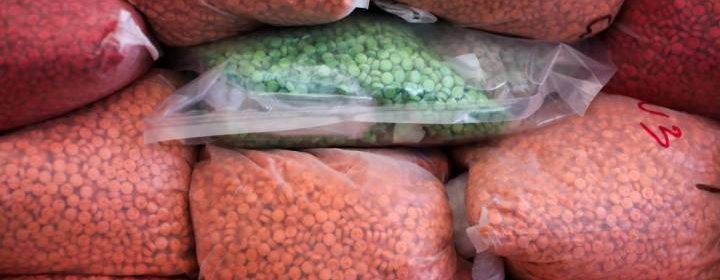Illegal drug trade still thriving in Asia, Australia amid coronavirus pandemic: UN

Illicit drug markets in the Asia-Pacific continue to expand and diversify and appear to be largely unaffected by the coronavirus outbreak, the United Nations said on Friday.
The production of methamphetamine, the most popular drug in the region, continues to hit record highs while prices fall to new lows in East and Southeast Asia, as well as Australia and New Zealand, the United Nations Office on Drugs and Crime (UNODC) said in a report that compiled data from 2019 to first quarter of 2020.
“It is hard to imagine that organized crime have again managed to expand the drug market, but they have,” said Jeremy Douglas, UNODC Representative for Southeast Asia and the Pacific.
“While the world has shifted its attention to the COVID-19 pandemic, all indications are that production and trafficking of synthetic drugs and chemicals continue at record levels in the region.”
Inshik Sim, a UNODC Illicit Drugs Analyst, told Reuters that recent intelligence suggested that there had been no change in the street price of methamphetamine in Bangkok or Manila, the capitals of Thailand and the Philippines and the biggest markets for the substance in Southeast Asia.
[ Sign up for our Health IQ newsletter for the latest coronavirus updates ]
This, he said, showed there had been “no impact on its availability in the market”.
The pattern of drug trade on the consumer level however has shifted more to online social media platforms as government measures against the coronavirus limits people’s movement, said Thailand’s Deputy Secretary-General of the Narcotics Control Board Paisith Sungkahapong.
While opium cultivation and heroin production has been declining in Southeast Asia’s Golden Triangle which straddles northern Myanmar and parts of Laos and Thailand, there has been a “steady emergence” of dangerous synthetic opioids like fentanyl in East And Southeast Asia, said the report.
“The illicit drug market here is at a tipping point as synthetic opioid production appears to be migrating into places with deep governance problems like the Golden Triangle,” said Douglas. “Southeast Asia could well become a source of opioids for other parts of the world while these substances get mixed into or displace part of the regional heroin supply.”
Other synthetic drugs such as ecstasy, ketamine and cannabinoids are also increasingly found across the region, the UNODC report said.
(Reporting by Panu Wongcha-um and Tom Allard; Editing by Michael Perry)
Source: Read Full Article

